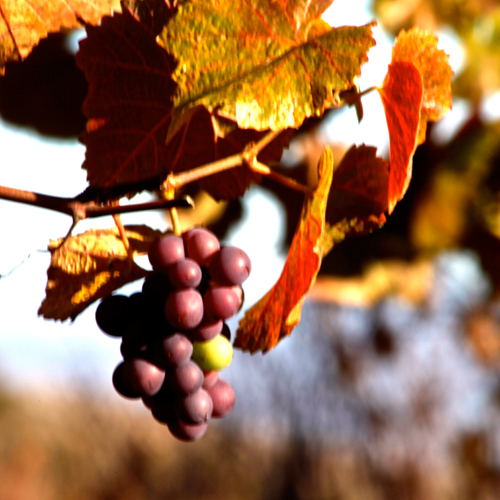
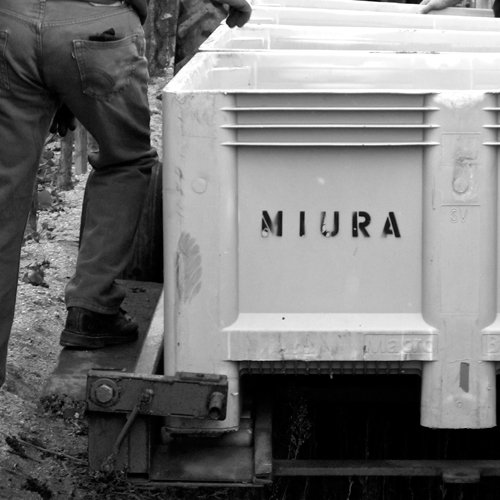
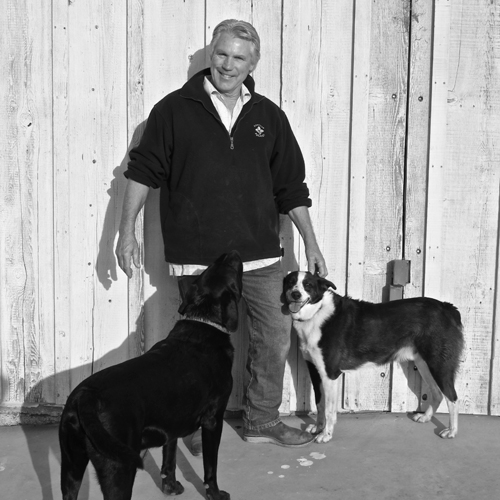
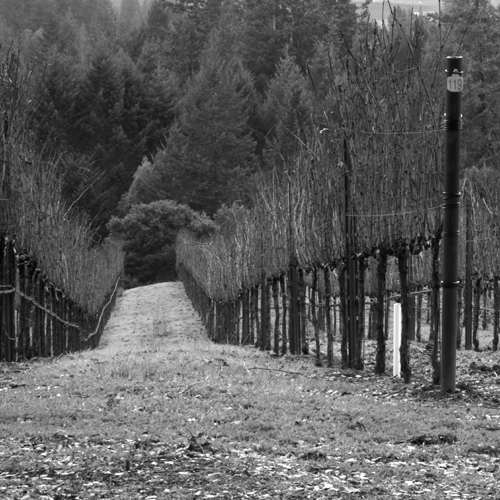
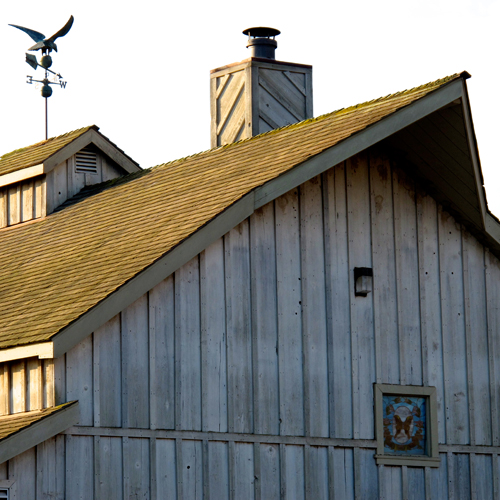
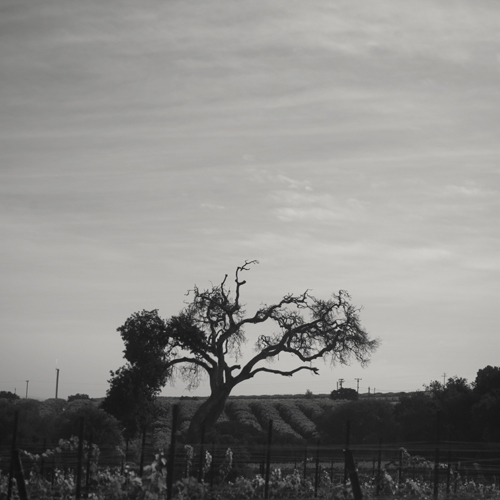

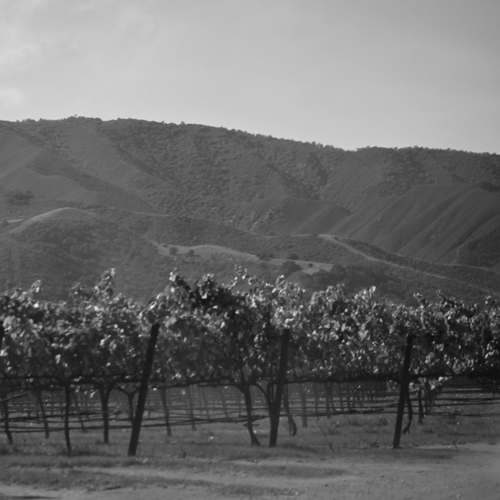
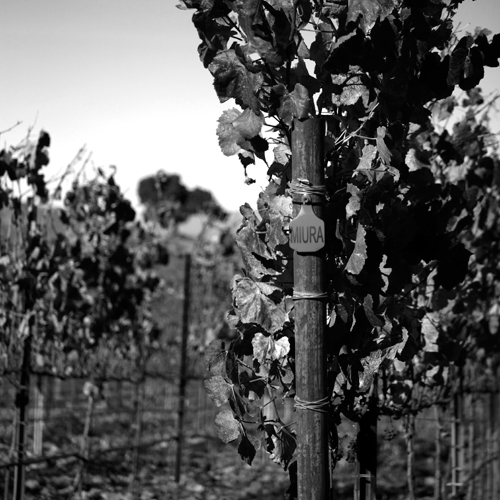
Miura (myu rä) n. 1. Derived from Don Eduardo Miura, the most famous breeder of Spanish fighting bulls; for the Spanish, Miura is a legendary name signifying nobility, boldness and power.
Miura is our program that focuses on what I feel are the best regions in California for the growing of Chardonnay and Pinot Noir. Within each of those regions I have selected the vineyards that best exemplify that area stylistically and qualitatively.
MIURA, PINOT NOIR, MONTEREY COUNTY
The Vineyard
This is our entry level Pinot Noir. A wine that we made because a number of high-end restaurants wanted to pour a Miura Pinot Noir by the glass but found that our single vineyard offerings were too expensive to do so. We made this wine to be more approachable in its youth, but one that retains the complexity and elegance associated with all Miura Pinot Noirs and yet priced so it can be consumed on an everyday basis.
The 2022
In 2022 we continued to get fruit from the Mission Ranch. A cool spring delayed development of the grapes and we picked these grapes a couple of weeks later than usual. Overall, the harvest was mild and did not suffer any extreme weather leading to a very successful vintage. Rich but not a fruit bomb and nicely balanced by spice notes and a bright red fruit on the palate.
1176 cases produced
The 2021
After the horrific fires in 2020 that affected practically all of the wine regions in California and where we made the decision not to produce any wine, in 2021 once again, we went back to one of our favorite growers, Steve McIntyre, whom we feel grows some of the best fruit in Monterey County. The grapes for this wine came from the Mission Ranch in the southwestern part of the Monterey County AVA. A mild spring meant perfect development of the grapes and resulted in wines that are elegant, fruit forward with bright red tones. The grapes were fermented using wild yeasts and aged in French oak barrels for 10 months before being bottled unfined and unfiltered.
1408 cases produced
MIURA, PINO NOIR, PISONI VINEYARD, SANTA LUCIA HIGHLANDS
The Vineyard
This property has become the most talked about Pinot Noir property in California for good reason. The wines from this vineyard have an intensity and richness unmatched by any other Pinot Noirs anywhere. The vineyard is tucked among the hills and dry creek beds of the southern part of the Santa Lucia Highlands in Monterey. It lies in a secluded corner of the hills separating the Salinas Valley from Big Sur and the Monterey Coast. Vines are planted in several small blocks on what appears to be gravel and sand eroded down from the mountains. The blocks are whimsically named after people, objects and family members— “Camper,” “Mommy’s,” “Elias,” to name a few (our grapes come from the “Camper” and “Hermanos” sections. The site is dry, almost arid, but not particularly hot. Most of the vineyard faces east to southeast, capturing more morning than afternoon sun. The intensity with which this vineyard is farmed is unmatched in the Highlands, or anywhere else for that matter. We ferment the Pisoni with a measure of whole bunches in the bottom of the tank, and punch it down by hand. I like the moderate amount of tannin that adding some stems to the fermentation brings—just enough to give some refreshing grip to the mouth feel, and keep the wine from being too soft.
The 2018
Another dry year gave us miniscule yields but the wine is deeply concentrated and exudes the immense power associated with this legendary property. The wine has the typical black fruit and dried herb character that is a signature of this very special vineyard.
147 cases produced
The 2017
After a number of years of prolonged drought there was plenty of rain at the beginning of the year. The spring and summer were cooler than normal which led to an even and slightly less than normal yields. The wine is firmer and more well-balanced than usual.
241 cases produced
MIURA, PINO NOIR, ROCHIOLI VINEYARD, RUSSIAN RIVER VALLEY
The Vineyard
In 2012, after 10 years of pestering Joe and Tom Rochioli I finally received the call that I had won the lottery! For me the Rochioli Vineyard has always been ‘THE’ vineyard in Sonoma County and one of the few vineyards in California that I would term ‘Grand Cru’. This wine is fermented with native yeasts, has about 25% whole clusters and is aged for 12 months in French oak barrels (67% new) before being bottled unfiltered.
The 2017
Lots of winter rain with a very warm summer led to a challenging time in the vineyards but the fruit that came in about 10 days later than normal was of average size and in good shape. Fortunately, we were done with all of our harvesting 3 weeks before the devastating fires that affected Napa Valley and northern Sonoma. Another successful wine from this amazingly well-farmed property.
97 cases produced
MIURA, PINOT NOIR, MORNING DEW RANCH, ANDERSON VALLEY
The Vineyard
This vineyard belonged to Burt Williams of Williams & Selyem fame. After Burt and Ed Selyem sold their winery in 1997, Burt decided to buy a hillside parcel and planted it in 1998. After 3 years of trying, we finally convinced him to sell us about 2 acres worth of grapes in 2006. The wine here is the most Burgundy-like of all the Pinots made in California, as it is the coolest grape growing region in the state. Lighter, more fragrant and perfumed, with bright red fruit on the palate. We formerly used to label this vineyard as Williams Ranch, but after Burt Williams sold it in early 2016, the new owner, Dario Sattui, asked us if we would mind referring to this vineyard like everyone else that made wine from it.
The 2018
This vineyard yields a miserly 1 ¼ tons per acre which is tiny by California standards as even Grand Cru Burgundy gets 2 tons to the acre! As always, this wine continues to be a model of elegance and finesse, molded by an intense perfume on the nose and red cherry and wild strawberries on the palate.
106 cases produced
The 2017
Finally, after a string of drought-ridden harvests producing miniscule yields we were to garner a decent size crop. Decent that is for this vineyard because 1 ½ tons per acre is still tiny by California standards and even Grand Cru Burgundy gets 2 tons to the acre!
200 cases produced
MIURA, PINOT NOIR, MATADOR MIURA
Matador is a bottling of my favorite barrel of Pinot Noir that we produced in our winery in a given year. Typically we produce over 150 barrels so it is a process to determine which I feel is our best effort! The wine is only bottled in magnums, so only 150 magnums per year are produced.
The 2012
The barrel for Matador this year came from a block in the Pisoni Vineyard called ’Hermanos’, meaning brothers in Spanish. It was entirely made up of whole clusters, in other words the grapes were never destemmed. Incredibly aromatic and complex with layer after layer of fruit and nuances.
The 2013
Like the 2012, the barrel I selected for Matador this year also came from the Hermanos block of the Pisoni Vineyard. Unlike the 2012, this barrel was not made up of whole clusters and instead was characterized by deep black fruit, mushrooms, earth and dried herbs.
